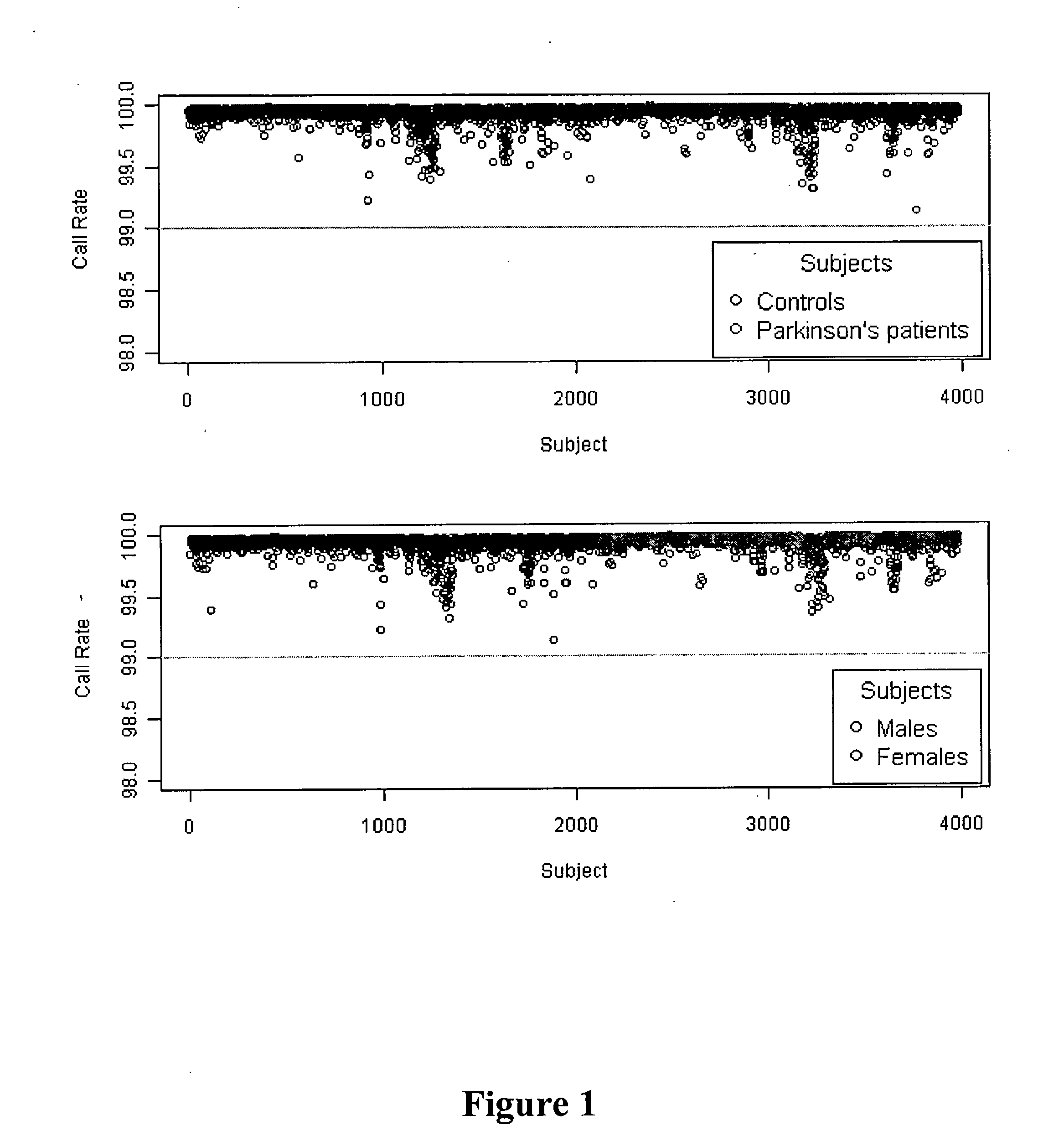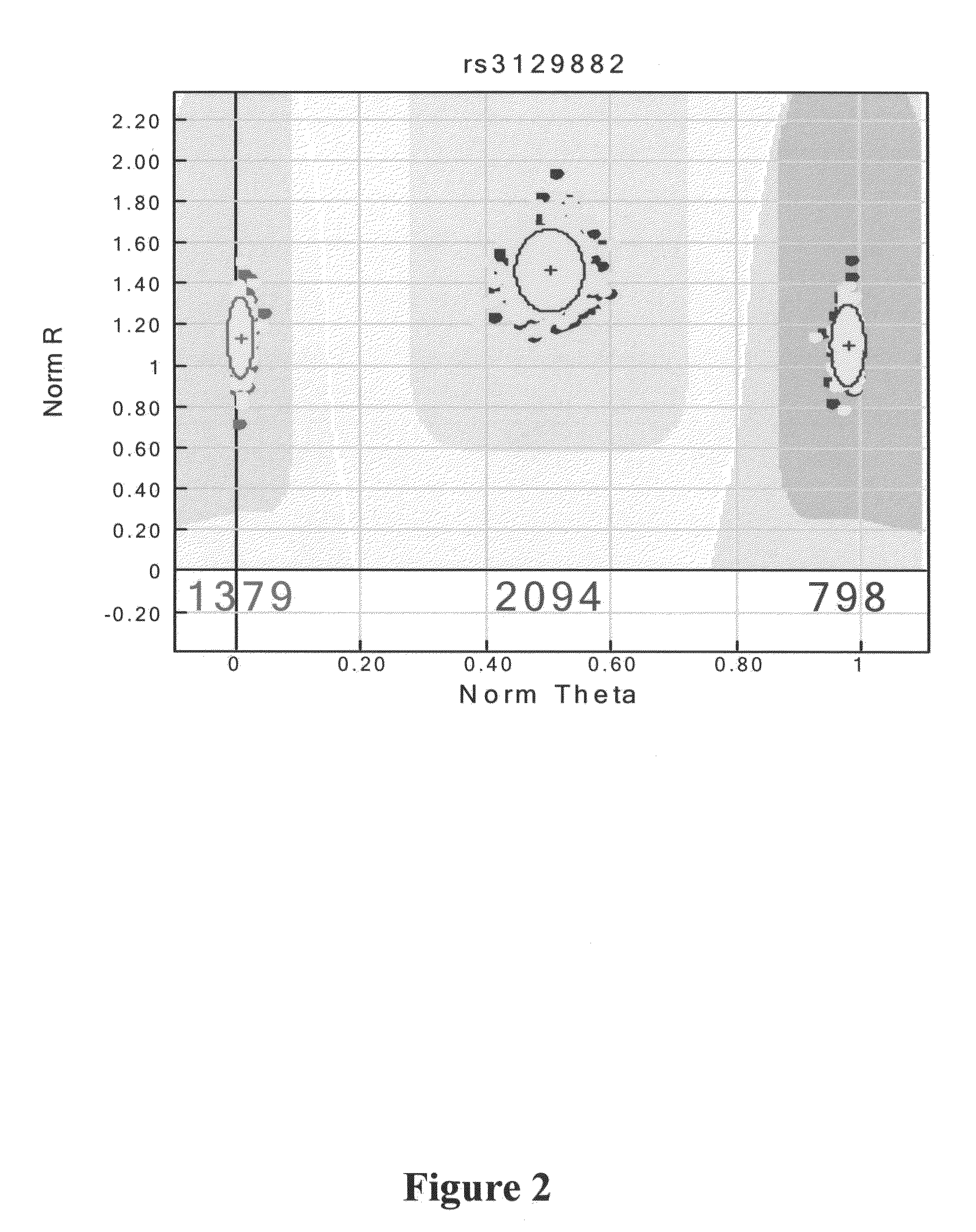Method of identifying and treating a person having a predisposition to or afflicted with Parkinson disease
a parkinson disease and predisposition technology, applied in the field of parkinson disease predisposition or affliction, can solve the problems of increasing disability, clinical neuroprotective trials have not been successful, and neither a cure nor an effective treatment can prevent the disease, so as to inhibit the development of pd, increase the neuroprotective effect of caffeine, and allow or increase the neuroprotective effect of nicotin
- Summary
- Abstract
- Description
- Claims
- Application Information
AI Technical Summary
Benefits of technology
Problems solved by technology
Method used
Image
Examples
example 1
[0236]GWAS conducted in Japan identified two novel PD loci. Five GWAS were performed in Caucasians, most confirmed the known SNCA and MAPT, but none identified any new genes that reached genome-wide significance. The inventors investigated whether the genetic component in PD in Caucasians was primarily due to the genes that have already been identified. Using NGRC data, they estimated heritability before and after excluding the known pathogenic and susceptibility loci. Heritability of PD declined from 0.6 (P<0.0001) to 0.41 (P=0.01), but was still significant, suggesting additional unidentified genes exist.
[0237]A GWAS with 2,000 PD patients, 1,986 control subjects, and 811,597 SNPs (Table 1) was performed. Subjects were recruited from NGRC clinics using uniform criteria for diagnosis, subject selection, data collection and DNA preparation. Twenty five percent of PD diagnoses change within the initial 5.4 years; therefore follow-up substantially reduces heterogeneity. Mean disease d...
example 2
[0253]Parkinson disease (PD) is a common neurodegenerative disorder that leads to motor and cognitive disability. PD is heterogeneous; the most common forms are sporadic, late-onset, and involve gene-environment interaction. A genome-wide association study (GWAS) with 2000 PD and 1986 control Caucasian subjects from NeuroGenetics Research Consortium (NGRC) was performed. The known associations with SNCA and MAPT; independently replicated the suggested association with GAK (PPankratz+NGRC=3.2×10−9) was confirmed; and a novel association with HLA-DR (PNGRC=2.9×10−8) was detected, which was replicated using two independent datasets (PReplication1+2=1.1×10−3, PReplication1+2+NGRC−1.9×10−10). The HLA association was uniform across genetic and environmental risk strata, and strong in sporadic (P=5.5×10−10) and late-onset (P=2.4×10−8) PD. The new PD-associated genes were designated PARK17 (GAK) and PARK18 (HLA). Association with HLA is in line with reported neuro-inflammation involving up-...
example 3
[0462]Applicants' aim was to identify genes that influence the inverse association of coffee with the risk of developing PD. Applicants used genome-wide genotype data and lifetime caffeinated-coffee-consumption data on 1458 persons with PD and 931 without PD from the NeuroGenetics Research Consortium (NGRC), and performed a genomewide association and interaction study (GWAIS), testing each SNP's main-effect plus its interaction with coffee, adjusting for sex, age and two principal-components. Applicants then stratified subjects as heavy- or light-coffeedrinkers and performed genome-wide association study (GWAS) in each group. Applicants replicated the most significant SNP. Finally, Applicants imputed the NGRC dataset, increasing genomic coverage to examine the region of interest in detail. The primary analyses (GWAIS, GWAS, Replication) were performed using genotyped data. In GWAIS, the most significant signal came from rs4998386 and neighboring SNPs in GRIN2A. GRIN2A encodes an NMD...
PUM
| Property | Measurement | Unit |
|---|---|---|
| Fraction | aaaaa | aaaaa |
| Correlation function | aaaaa | aaaaa |
| Crystal polymorphism | aaaaa | aaaaa |
Abstract
Description
Claims
Application Information
 Login to View More
Login to View More - R&D
- Intellectual Property
- Life Sciences
- Materials
- Tech Scout
- Unparalleled Data Quality
- Higher Quality Content
- 60% Fewer Hallucinations
Browse by: Latest US Patents, China's latest patents, Technical Efficacy Thesaurus, Application Domain, Technology Topic, Popular Technical Reports.
© 2025 PatSnap. All rights reserved.Legal|Privacy policy|Modern Slavery Act Transparency Statement|Sitemap|About US| Contact US: help@patsnap.com



